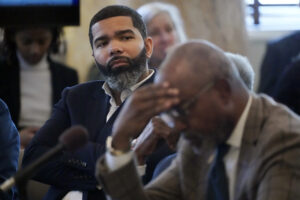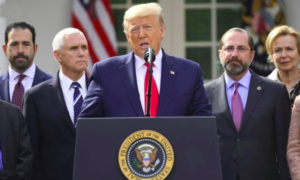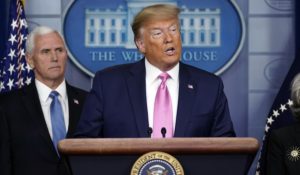Journalism Was Only a Bit Player in Exposing Watergate Crimes
As the 40th anniversary of the infamous break-in nears, the press shouldn't inflate its investigatory role.
No leak, no “investigatory journalism” ever revealed any facet of what we know as Watergate that was not already a subject of investigation and inquiry by authorities. The marking of the 40th anniversary of the June 17, 1972, Watergate break-in nevertheless appears to focus on the role of a few journalists. Robert Redford will reprise the 1976 movie “All the President’s Men” with a documentary version. Now, of course, he can identify Mark Felt, aka “Deep Throat,” as the leaker who destroyed Richard Nixon’s presidency. Felt indeed played a part, and Nixon knew of his actions in October 1972, as revealed in Nixon’s tapes released in 1997, eight years before the elderly and ailing Felt went public. Nixon was furious because he had considered Felt, “that Jew” (he was not), for the post of FBI director. Nixon realized he could do nothing, for Felt “knew too much” — as, for example, the illegal break-ins committed by Nixon’s “plumbers.”
The media’s canonization of its primacy in “breaking the case” threatens to leave us with “Hamlet” absent the Prince of Denmark. Inevitably the Watergate narrative will be reduced to its bare essentials. G. Gordon Liddy surely will not make an index, and the “President’s Men” will slip into their deserved place as largely anonymous spear carriers. But Richard M. Nixon, the 37th president of the United States, and his story will endure. Future textbooks (assuming we will have them) will render his history roughly as follows: “Richard Nixon, the first president of the United States to resign as a result of his abuses of power and criminal obstruction of justice…,” perhaps then followed with several sentences describing other parts of his presidency. For certain, Nixon is the principal player of Watergate; journalism will at best be remembered as a bit player in bringing him down.
Leaks are a way of life in Washington circles; their purpose and motive are self-evident and self-serving. Onetime Nixon presidential counsel Leonard Garment regularly talked with media people to reveal forthcoming potentially explosive news, hoping to defuse it. Sam Dash, the Watergate Select Committee counsel, once remarked: “Leak? I leaked all the time” — to advance his committee’s work.
Watergate was “done” by many: Judge John Sirica, the District of Columbia U.S. attorney, Sen. Sam Ervin and his colleagues, administration and campaign officials who testified, the Watergate special prosecutor force, the bipartisan House impeachment inquiry, a unanimous Supreme Court and, of course, the tapes of Richard Nixon.
As Assistant U.S. Attorney Earl Silbert prepared to turn the Watergate case over to incoming special prosecutor Archibald Cox in May 1973, he prepared a report of witnesses to be interviewed or presented to the grand jury. He named 27 individuals, detailing probable grounds for criminal indictment. Silbert and his colleagues have received scant credit for making the case, but the essential charges are all contained in this document — with no trace of Mark Felt and his “leaks.”
No. 27 was no less than “Richard Nixon, President of the United States.” “Were he not President,” Silbert wrote, “there is no question but that President Nixon would have to be questioned about a number of matters.” He cited conversations Nixon had with a variety of aides after the break-in, most important one with John Dean. Silbert had crossed the Rubicon in his trust of the president. Nixon’s May 22, 1973, statement proclaiming his innocence (“I neither authorized nor encouraged subordinates to engage in illegal or improper campaign tactics”) “rather than answering all these questions, raises a host of others,” Silbert observed. He suggested that his successors interview Nixon.
Cox read the prosecutor’s report and advised his staff to “lay off [the president] for now,” as he wrote on the document. His plate already was full. Furthermore, the prosecutors lacked strong corroborating evidence to support what John Dean and others had told them. Alas, the gift of the gods came in July 1973 when Alexander Butterfield revealed that the president had taped his Oval Office conversations. With that, the story of Watergate turned into a protracted legal battle for possession of the tapes. Leakers and their journalistic enablers largely became irrelevant. The president and his taped conversations provided the decisive leak.Nixon’s tapes, which he fought bitterly to retain, are an alphabet of woe that is at the heart of the historical record against him. It was the tapes that made the case against Nixon at the time; it is the tapes, the gift that keeps on giving, that drives more nails into the case against him. We are far beyond the famous “smoking gun” conversation in which Nixon tried to use the CIA to thwart the FBI investigation. The tapes released in 1997 clearly reveal Nixon’s knowledge of “hush money” payments. The burglar Howard Hunt told presidential aide Charles Colson that it was time for the White House to “start to give, uh, some creative, uh, thinking to the affair.” After all, he added, “we were protecting the guys who are really responsible.” Bob Haldeman told Nixon that Hunt was “happy”– and at “a considerable cost,” the president said in regard to payments to Hunt.
John Dean left the Oval Office at noon on March 21, 1973, following the “cancer on the presidency” conversation that reviewed the events of Watergate and in which Dean labored to urge Nixon to move in front of the story. An hour later the president summoned his trusted secretary, Rose Mary Woods, to ask about unrecorded cash she held, money provided by a “contributor.” Later that afternoon, Nixon and Haldeman had a lengthy discussion in which Dean’s information offered no surprises or meaning, and they continued to talk about payments to others. Then the cover-up continued; Nixon understood the necessary course of action — “the cover-up is the main ingredient,” he told Charles Colson. “That’s where we gotta cut our losses. …The President’s losses gotta be cut on the cover-up deal.” Nixon well knew the stakes. “I don’t give a shit what happens,” “stonewall it,” “plead the Fifth Amendment,” “cover up”—anything to “save the plan,” he defiantly said.
The Watergate break-in itself is best remembered for parting the veil for what Attorney General John Mitchell called the “White House Horrors.” Mitchell’s 1973 Senate testimony referred to the catalog of abuses of power, including impeachable crimes, that eventually could be traced to the president’s own complicity. After the myths of journalism, after the president’s men, and even after the president’s “enemies” inevitably fade deeper into the mists of history, we will still have Richard Nixon — to remember or to “kick around.”
Stanley Kutler is the writer with Harry Shearer of “Nixon’s the One,” a television comedy series airing in Britain and forthcoming in the United States. W.W. Norton has published a 40th anniversary edition of Kutler’s “Wars of Watergate.”
Your support matters…Independent journalism is under threat and overshadowed by heavily funded mainstream media.
You can help level the playing field. Become a member.
Your tax-deductible contribution keeps us digging beneath the headlines to give you thought-provoking, investigative reporting and analysis that unearths what's really happening- without compromise.
Give today to support our courageous, independent journalists.






You need to be a supporter to comment.
There are currently no responses to this article.
Be the first to respond.